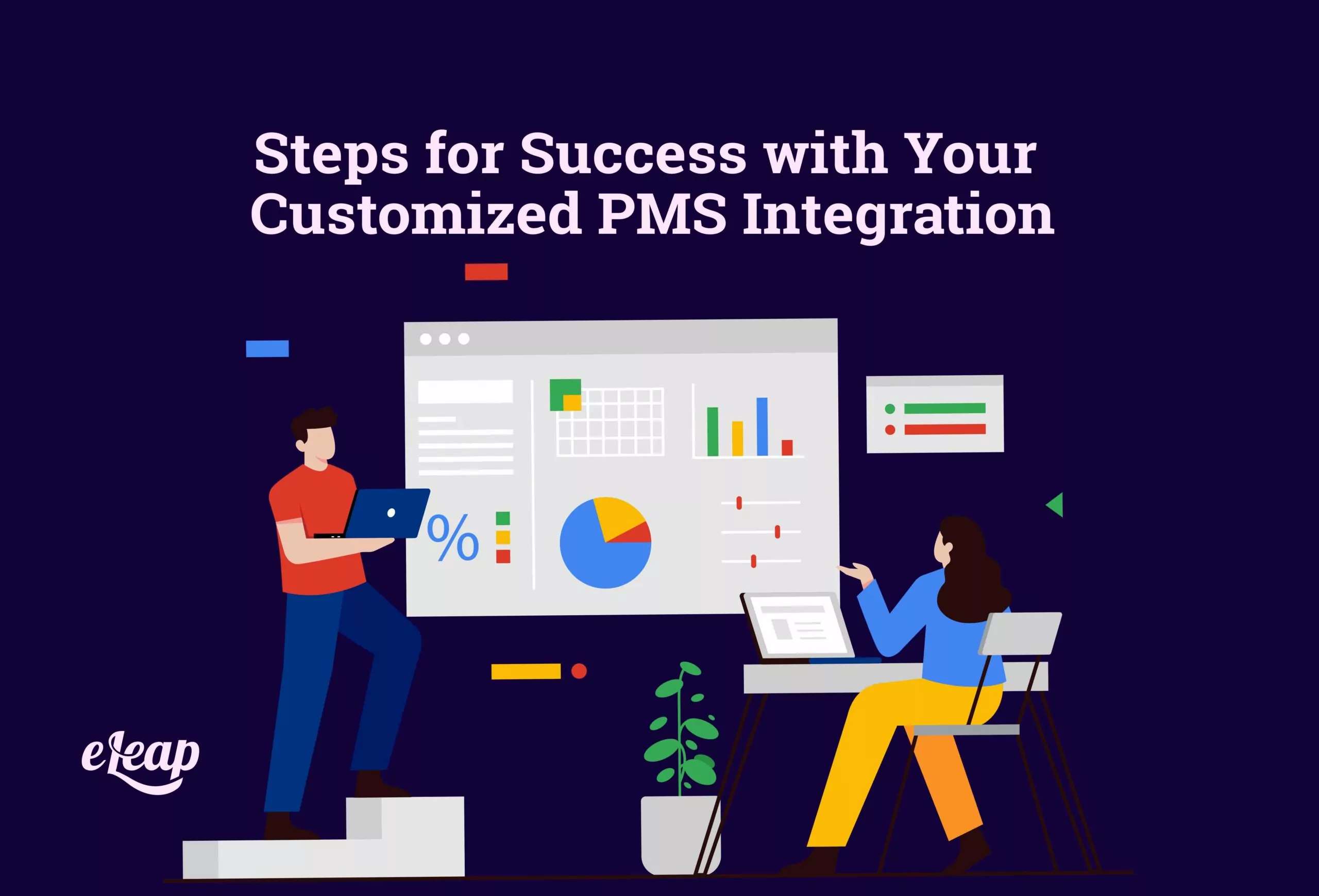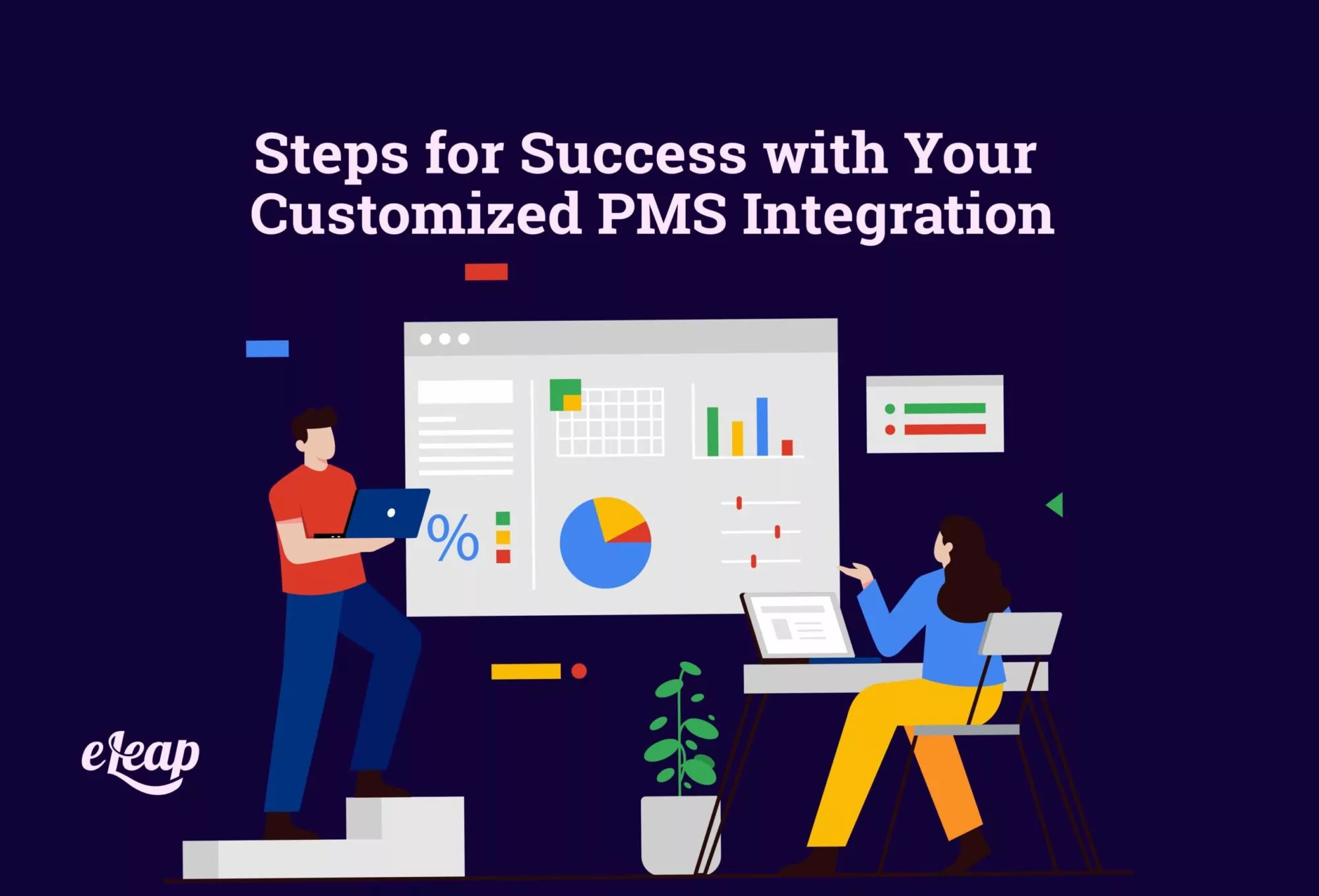Steps for Success with Your Customized PMS Integration

Any organization that wants to ensure that performance is properly tracked and that the insights are utilized will need to incorporate a performance management system or PMS. This platform should be designed to meet the needs of the organization, which is why custom solutions are generally the best option. Although you’ll find pre-packaged software and tools, along with a selection of free and cheap PMS solutions, those aren’t necessarily the best way to go. However, cloud-based people success platforms like eLeaP provide a great balance between developing a custom solution in-house and utilizing the customization tools built into a software-as-a-service platform.
Sure, they’ll provide the basic framework for a PMS when you’re just starting and don’t have the budget for custom solutions. However, they won’t give you the chance to integrate your own goals, strategy, and methodologies. If you want to ensure that your PMS is going to engage your audience and give everyone a sense of ownership of their performance management, going with a customizable solution like eLeaP makes for a compelling option.
A PMS does more than just track performance metrics. It creates a framework that promotes the strong feedback and learning cultures that organizations today need to have to attract top talent. The exact process of building and customizing your PMS will vary depending on the needs, goals, and intentions of the organization. However, there are some tips that can ensure every organization is ready to step into the future with a robust PMS solution that promotes collaborative, engaged learning.

Tip 1: Create Your Performance Management Strategy First
As with anything in business, you must first have a plan. Creating a solid strategy for performance management will ensure that you have a standardized way of measuring results and seeing where people stand in their various roles. This strategy could incorporate several training and eLearning tools, include goal setting and performance reviews, and so much more.
Consider what type of performance management is going to be best for your team. The best way to do this? Ask the people what they want. If anyone will tell you how people learn and perform best, it’s the people themselves. Utilize their input to create your performance management strategy and move on to the next step of setting goals.
Tip 2: Set Goals for the Performance Management Process
You need to have guidelines, goals, and boundaries. It’s important to set the expectations early and check in on them often. Setting goals for performance management should include short- and long-term goals for the organization and each team member alike. Consider what you want out of performance management specifically and how your PMS can help you achieve those goals.
Remember, too, when setting goals that they should be SMART:
- Specific
- Measurable
- Attainable
- Results-oriented
- Time-bound
For example, a goal of “improved performance” is not a goal at all, but a mere wish of those involved. On the other hand, creating a goal like this could be much more effective:
Deliver improved performance for the organization and its employees by creating a 50% increase in collaborative engagement and learning opportunities through 2025.
Here, you have an exact and specific goal that’s also measurable and for most organizations, quite attainable. Even companies that already utilize collaboration and engagement can still make a lot of steps in the right direction when they put a PMS to work to help them measure and achieve organizational and individual professional goals.
Tip 3: Build Your Performance Review System
Remember, the old way of handling performance reviews is out, and the new proactive approach is in. It’s no longer about looking back on performance and then making changes. It’s about creating goals for performance in advance, setting standards and best practices, and making sure that everyone is on track for the best performance from the start.
The great thing about custom PMS platforms is that you can easily create your own performance review system that tracks everyone’s progress. It helps them make goals ahead of time so they are achieving new things and growing in their position on a regular basis, and not making improvements as a result of a poor or even an “average” performance review.
Tip 4: Implement and Monitor Your PMS and Performance Management Goals
Once you’ve got all the other structures in place, you’re going to be ready to implement your new PMS and monitor your team’s performance and track their goal progress. A customized PMS will allow you to create a branded solution that embraces the principles and styles of your organization and makes people feel connected to their performance management.
You should always test and try out your PMS and its various features before you call it a day. It might be executed flawlessly on the first try. It might not. After you’ve implemented the system, test it out and see if it’s capable of delivering what you need. If tweaks are needed, make them as you go. Then, all that’s left is to monitor performance and keep tabs on people’s goals over time.
Get Team Members’ Input
Members of your organization will have plenty of input to offer if you ask them how they feel about performance management or if they have suggestions for a better system for the future. People will be more than happy to tell you how they best learn and perform on the job, as well as what types of things might discourage them from learning along the way.
Emphasis needs to be on communication, especially if you’re working with remote staff. This keeps everyone connected, ensures that people are on the same page, and guarantees that there are no questions about expectations and performance goals, including daily and weekly schedules, etc. Ask your team how they best communicate—email, text, phone calls, and even video chats are all options today and you should make sure that you’ve got options that work for everyone.
The Future of L&D is Custom and Personal
It is no longer going to be effective to put a standard training program in place and use traditional performance metrics to see if people are on track. That doesn’t tell you much at all, except that people can follow simple guidelines and complete training modules as they’re told. People aren’t machines, though. Your monitoring of their performance and development needs to be just as customized and un-machine-like as your employees, which includes your LMS and PMS alike. The eLeaP continuous performance management system provides organizations with powerful options to attract and retain high caliber team members.